F4U, code / nickname: corsair, is a U.S. Navy type I propeller based carrier and land-based fighter
F4U fighter is a single seat, single engine, flat wing configuration, with good acceleration performance, powerful firepower, fast climb, ruggedness and durability. It is the first fighter in the United States with a speed of more than 640 km / h and one of the fastest piston fighters. The design of its wings makes it very different from other similar aircraft. In addition to air combat, it also acts as a tactical bomber.
The F4U fighter was developed by the US water company. It first flew on May 29, 1940. It served in the US Army from the Second World War to the Korean War. After the Korean War, F4U was still in service in some countries until the 1960s. In the Pacific battlefield of World War II, F4U and F6F were the main forces of the US Navy and became strong rivals of Japanese fighter planes. After the war, according to the statistics of the U.S. Navy, the shooting down ratio of F4U was 11:1, that is, only one enemy plane was shot down for every 11 enemy planes shot down, with an impressive record
Chinese Name: F4U fighter foreign name: F4U Corsair development unit: American water company [1] development time: 1938 service time: September 1942 finalization time: 1939 first flight time of piston carrier based fighter of National American model: may 291940
Development and evolution
Development background
On february1,1938, the US Navy office issued the technical specifications of high-performance shipborne fighter to the "American aviation manufacturing company" (Walt's parent company). Walter's president, c.j.mccarthy, assigned Rex beisel, the company's chief engineer, to complete this task. Walter set up a team including the company's elite, design code v-166, and initially developed the v-166-a design with the parrat Whitney r-1830 wasp air-cooled star engine.
In 1940, in order to improve the speed, the US Naval Aviation Office decided to use the xr-2800-4 dual hornet engine and install a two pole supercharger on the xf4u-1 prototype. Due to the change of engine, the model of water is changed to v-166-b, and v-166-a is not implemented
Construction history
On may1,1940, the xf4u-1 made its first flight, and five months later, it flew 73 kilometers from Stamford to Hartford, with an average of 651.8 kilometers / hour. The US Navy was very satisfied with this, and placed an order for 584 aircraft in June 1941. In the next 11 years, the F4U produced 12500 units
At the end of 1941, some problems were found in the experiments of escorting aircraft carriers and other aircraft carriers during the F4U battle. The biggest problem is the long nose of the plane, which is 4.27 meters in front of the pilot. When the plane took off, it blocked the view of 12 degrees. In addition, the fuel and lubricating oil leaked from the engine and splashed on the open engine room and front windshield at a high speed, resulting in reduced visibility. Because it was judged by the Navy that it was not suitable to serve on an aircraft carrier, it was assigned to the U.S. Marine Corps ground-based flight team, and achieved good results. Britain, France, New Zealand and Australia also received F4U in World War II [2].
With the change of natural environment, F4U combat has also changed. Seven different types of aircraft have been produced in small quantities for other countries (f4u-7 is produced for France), and one is not produced (f4u-6). Some models have different suffixes because of different airframes, weapons and engines. In addition to water, Goodyear aircraft also produces some [2]. In addition, there are night combat type (suffix letter N) and photographic type (suffix letter P). The aircraft has more than 950 improvements in total, but the features of F4U inverted gull wing have never changed. Some aircraft are often taken from the production line for some improvements. Some design prototypes are prefixed (such as xf4u-3). By the end of the production of "Pirates" in 1952, there were 16 types of modifications on the list. The flight crew gave F4U many nicknames: "pipe nose", "curved wing bird", "fat pig" and "flag scraper". The last nickname was derived from the poor deck flight characteristics. Japanese call it "death whistle" because the radiator in the wing makes a similar whistle
Service history
F4U shipborne fighter
In 1942, the F4U fighter officially entered the US Navy. The flight squadron vf-17, which takes the lead in using F4U, originally planned to equip the aircraft carrier Bunker Hill with F4U, but was forced to give up because of insufficient maintenance parts and some technical problems during the take-off and landing of the aircraft carrier. Instead, it was configured in the Solomon Islands theater. Since then, F4U has successively moved to the South Pacific, the Philippines, Okinawa and other places. The main task of F4U during the Korean War was to attack the ground, and there were many injuries due to the attack of ground artillery fire, but the overall performance was still very outstanding, active in the close support of the battle front
In order to reduce the pollution of F4U fighter's fuel and lubricating oil on the windshield, the UK directly sealed the upper engine hood, so that the fuel and lubricating oil remained in the fuselage. Many simple and effective improvements have been made to improve poor low-speed flight performance, including landing bounce and tail hook problems. These improvements have been applied to the production line. In 1944, the U.S. Navy decided to try again to put F4U into service on the aircraft carrier, and finally achieved success
F4U fighter has repeatedly engaged with the volunteer air force and the Korean Air Force over Korea, and often adopts the "lufberry circle formation" (also known as the large circle formation, a defensive circle array used by Indians in the pioneer period of the western United States). However, due to the speed gap and mission characteristics, it is unable to effectively counter jet aircraft as a whole
Design
F4U is very different from the aircraft at that time in several aspects. First of all, the plane's wings adopt the layout of inverted seagull wings. Second, F4U adopted Pratt Whitney r-2800, the piston engine with the largest output at that time, with a power of 2000 HP, while most engines of military aircraft in the same period had only 1000 HP. These features also became a major focus of attention of F4U at that time. On october1,1940, the prototype xf4u-1 set a flight speed record at that time in a test flight, reaching 405 miles / h (652km/h), becoming the first US Fighter to exceed 400 miles / h (640km/h) (in fact, the xp-38 in the test had broken this record a little earlier, but the xf4u-1 immediately refreshed this record). However, the long nose makes the driver's forward vision poor, and after repeated changes, almost all of them try to improve this problem. At the same time, the low curvature of the wing limits the pilot's judgment, making it easy for the pilot to have accidents if he does not operate properly during landing (for example, the time of opening the fighter's landing rack is wrong). Weapons: 6 0.50 (12.7 mm) m2 machine guns (4 20mm machine guns in some models) and 2 1000lb (453.6kg) bombs or 8 5-inch (127mm) rockets.
Pneumatic structure
The F4U fighter is equipped with a double wasp air-cooled star engine, and the only one that can give full play to its power is the large Hamilton standard propeller, with a 3-Blade propeller diameter of 4.06 meters. Because landing on an aircraft carrier needs to withstand strong collision, a short and strong landing gear must be designed, and there is not enough space in the wings to store long landing gears. But if the propeller is shortened, the horsepower of the two wasps will be lost. So Walter's engineers designed the inverted gull wing, which has become its unique symbol. The inverted gull wing allows the aircraft to have a short and strong landing gear and a large propeller without touching the deck. Another by-product is that the aerodynamic characteristics of the aircraft are improved, so that the aircraft can fly faster.
F4U fighter uses the "flat rivet" invented by Walter and the "spot welding" process of the Navy aircraft factory. The surface is very smooth. In order to fully comply with aerodynamic standards, there is no protrusion on the aircraft. The engine supercharger is buried in the fuselage, and the radiator is buried in the inner wing. F4U fighter is the first aircraft in the Navy whose landing gear is fully integrated into the wing. Its landing gear is designed to be retracted backward, and then the wheels rotate 90 degrees to adapt to the narrow wing space. The landing gear was installed on two planes that were about to be completed, and the test was very successful. These new technologies, together with powerful engines, create a compact and compact body
dynamic system
F4U fighter is equipped with 1850 HP double hornet air-cooled star engine with a volume of 0.046 cubic meters, and several modifications of parrat white r-2800 double hornet engine are also used. Some use water methanol injection systems to boost horsepower for short periods of time. This engine is called "combat emergency" power, and W is added after the engine formation. During the Korean War, an engine adapted to cold weather was developed. This design suffix is added with L (low temperature)
weapons system
F4U fighter has built-in weapons: Six browning 0.5-inch machine guns are installed in the wings; Maximum bomb load: the central bomb rack under the fuselage can carry eight rockets or 907 kg (2000 lb) bombs.
performance data
Basic parameters
crew
1 person
a plane captain
10.26m
wingspan
12.47m
Machine height
4.5m
Wing area
Overall empty weight
4175kg
Maximum takeoff weight
6654 kg
Reference performance
Maximum flight speed
718 km / h
Practical ceiling
Maximum range
1617 km
Power device
engine
One Pratt Whitney r-2800-18w "double wasp" engine
Afterburner thrust
Oil load
weapons system
Cannon
Six browning 0.5-inch machine guns
Aerial bomb
Eight rockets or 907 kg (2000 lb) fried eggs
F4u-1:f4u-1 is the first production model based on the prototype xf4u-1 with some modifications. In September, 1942, the production line was officially put into operation. The first production model improved the rear view of the cockpit. However, this problem was not finally solved until f4u-1a installed the "protruding" cockpit. Two 0.50 inch machine guns installed on the nose were moved to the wing, and all six machine guns were installed outside the propeller arc, so there was no need to install the firing coordinator. The first type is equipped with r-2800-8 engine. Some are also fitted with r-2800-8w engines. These engines can generate 2000 horsepower (1492.5 kW) at takeoff, and the -8w model with water injection system can generate an additional 250 horsepower (186.6 kW) in an emergency. The "pirate" suffix of the first type is from a to D, and P is photographic
F4u-1b: only slightly different from 1A: some wing tips are shortened to match the lifting platform and hangar environment of British aircraft carriers.
F4u-1c: it began production in 1943, but did not appear on the battlefield until 1945. It is more suitable for ground attack than air combat. 1C is armed with four an/m2 20mm machine guns, with firepower stronger than the original six 50 machine guns. The weight of the new armed forces will hinder the acceleration. The total production capacity is only 200
F4u-1d: produced at the same time as 1C, but began to enter the battlefield in 1944. The main difference with 1a is that 1D is equipped with -8w water injection engine, which can provide an additional 250 emergency horsepower and increase the loading capacity of rocket and external fuel tank.
F4u-2: type I night combat type. Due to the naming principle of the U.S. Navy, the aircraft is classified as type II instead of f4u-1n. The change of the second type compared with the first type is that a manual radar device that can receive xaia (test air interception [model] a) is installed in the right wing and fuselage radio cabin. In order to install the radar antenna, the 0.50 inch machine gun at the outermost end of the right wing was removed. The radio was moved under the driver's seat and the radar was placed in the radio compartment. Aircraft engines are equipped with exhaust pipe flame suppressors. When the radar is installed, the modified model is 235 pounds lighter than the first model [2].
Xf4u-3:3 has never been put into battle. The original design idea was to enable F4U to fight at an altitude of 40000 feet, but the effect was not ideal. However, with the completion of f4u-4 research and development and the small demand for high-altitude operations on the battlefield, type 3 is only used for testing from beginning to end.
F4u-4: the most important model in F4U series. The power of the engine has been significantly enhanced, which can produce 2100 horsepower. With the emergency power, the aircraft can reach 2450 horsepower in five minutes, and the top speed can reach 721 kilometers per hour. The climb rate also improved significantly, from 3180 ft / min of type 1 to 3870 ft / min. At the same time, the front shape of the engine hood has also been changed, the propeller has been changed to a four blade propeller, the cabin interior has also been redesigned, and the hood has also been modified to provide a better vision for the driver
F4u-5: the r-2800-32w engine is adopted, and the all metal outer cloth skin is adopted for the first time, so that the extreme speed can reach 740 km / h. The fixed weapon is 4 20mm machine guns. Mainly served during the Korean War.
Au-1: developed for ground attack. Because there is no need to fight at high altitude, the supercharger is simplified and has only one pole and two speeds. The fixed weapon is four 20mm M-3 machine guns, with five hard attachment points on the left and right wings, which can mount various bombs and rockets [2].
F4u-7: mixed type of f4u-4 and Au-1. Specially developed for French naval aviation. The body and engine are the same as f4u-4, but the hard attachment points are the same as 4u-1, with five on each side. A total of 94 such fighters have been produced successively
Service dynamics
Six 12.7mm machine guns in the front
In 1942, F4U officially entered the US military service. The flight squadron vf-17, which took the lead in using F4U, originally planned to equip F4U on the "Bunker Hill" aircraft carrier, but was forced to give up due to insufficient maintenance parts and several technical problems during the take-off and landing of the aircraft carrier. Instead, it is deployed in the Solomon Islands theater. Since then, F4U has successively moved to the South Pacific, the Philippines, Okinawa and other places. The aircraft has repeatedly engaged with the volunteer air force and the Korean Air Force over Korea, and set up a "laffrey circle formation" (also known as the big circle formation, a defensive circle array used by Indians in the pioneer period of the western United States, and another one was created by laffrey, an officer of the French air force during World War I).
On March 6, 1953, a US Navy F4U fighter plane invaded China's airspace and was shot down by heyaxiong, pilot of MIG 15 of the 42nd regiment of the 14th fighter Aviation Division of the air force. The US pilot was killed.
At 12:22 on March 6, 1953, Qingdao radar station found an F4U intruded 20 kilometers east of Laoshan Mountain, China, flying at an altitude of 1 km, approaching the thousand mile island. At 12:25, two MiG-15 fighters of the 42nd regiment of the 14th division of the air force lifted off to intercept. The US F4U fighter was shot down by the MiG-15 fighter pilot of the 42nd regiment heyaxiong off the coast of Qingdao after two rounds of attack. The US pilot was killed.
July17,1969 Fernando, Honduran air force Captain Soto piloted No. 609 F4U fighter to shoot down three Salvadoran fighter planes, including p-51d and two Salvadoran F4U fighter planes. This was the final air battle result of F4U and the final air battle loss of P-51 "Mustang".
Specifications
General Characteristics
- Created On Windows
- Wingspan 29.7ft (9.0m)
- Length 26.3ft (8.0m)
- Height 11.1ft (3.4m)
- Empty Weight N/A
- Loaded Weight 9,818lbs (4,453kg)
Performance
- Horse Power/Weight Ratio 91661.744
- Wing Loading 27.3lbs/ft2 (133.4kg/m2)
- Wing Area 359.2ft2 (33.4m2)
- Drag Points 5165
Parts
- Number of Parts 157
- Control Surfaces 11
- Performance Cost 823
Required Mods
-
_Instrumentation
by Gestour
Version 1.0 (10/10/2020 6:48:13 PM)
View Mod Page

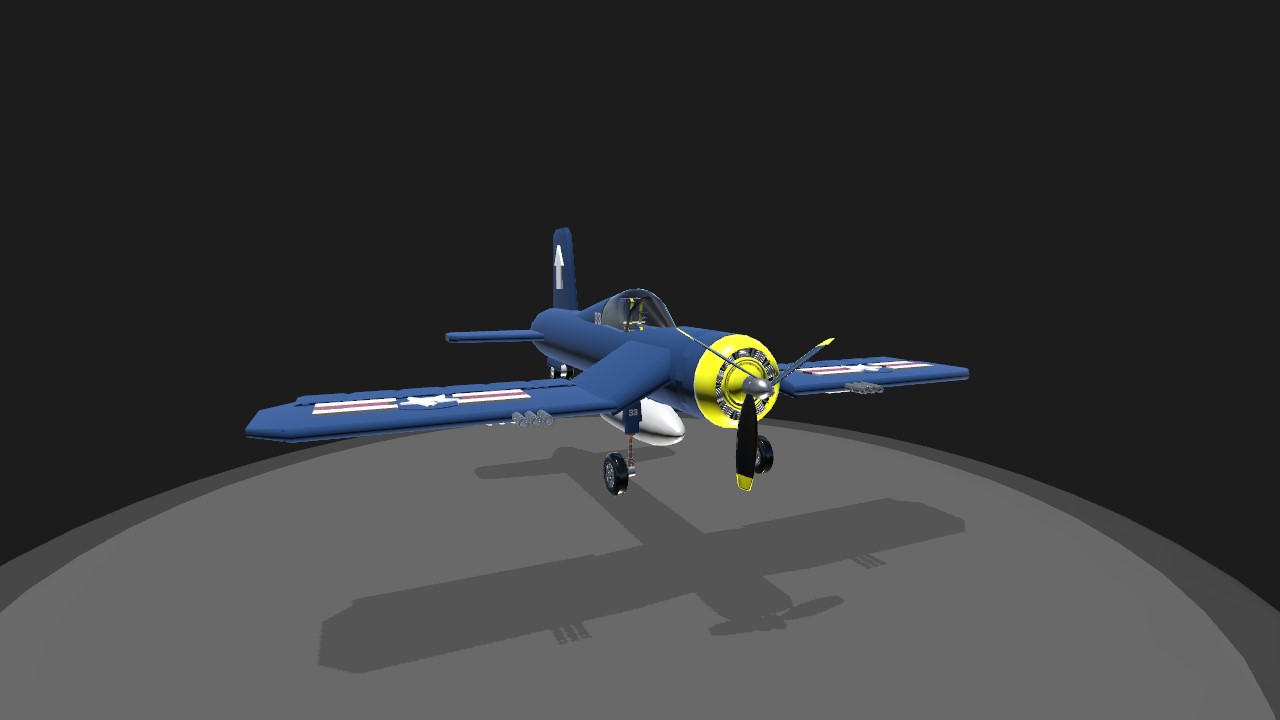
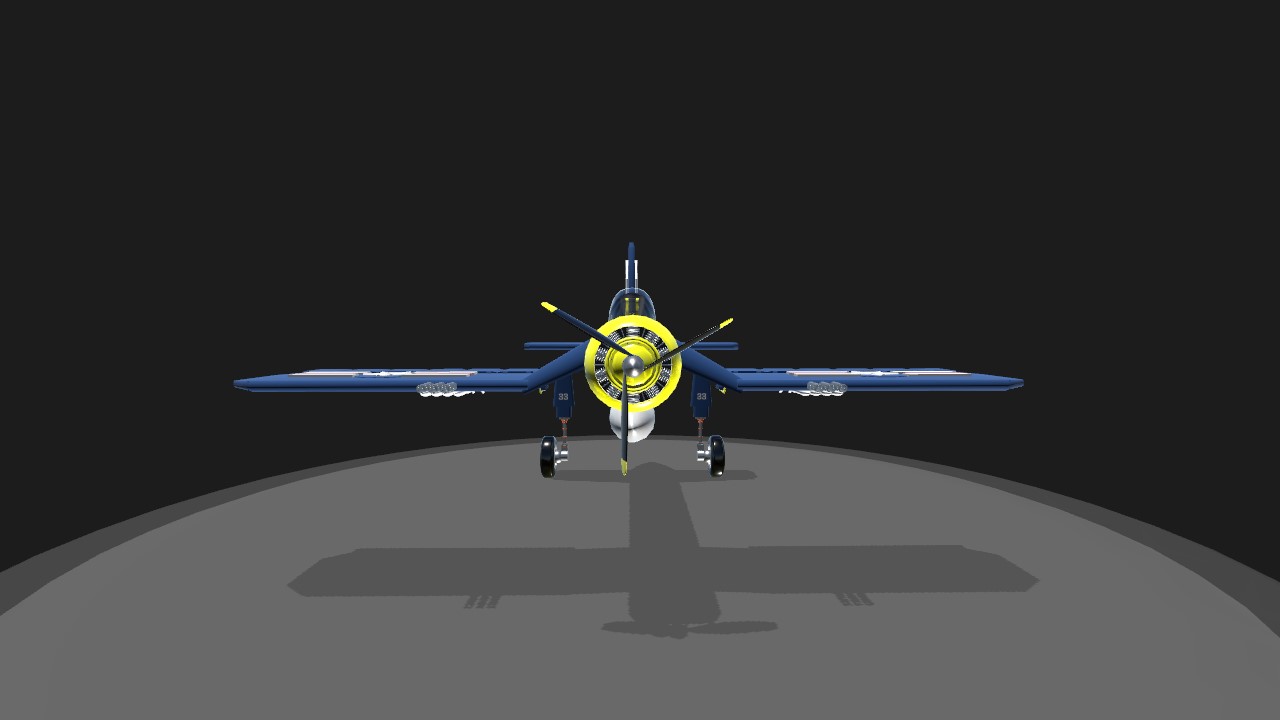
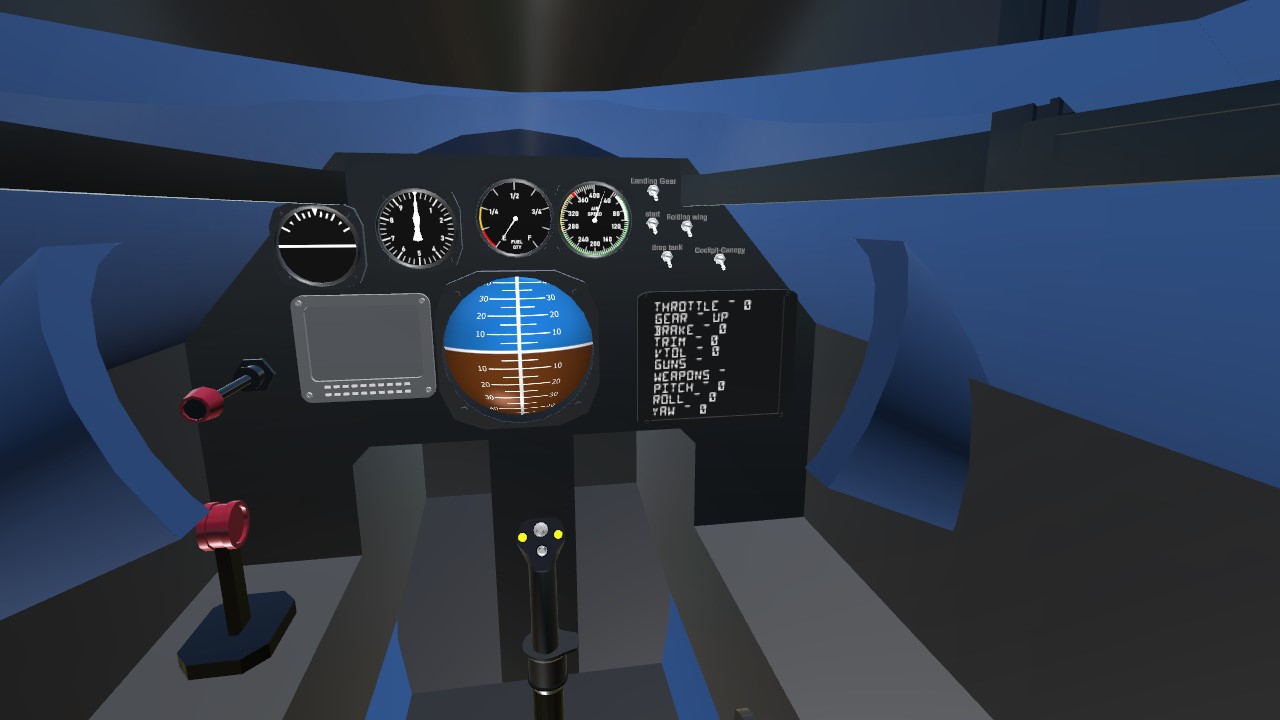
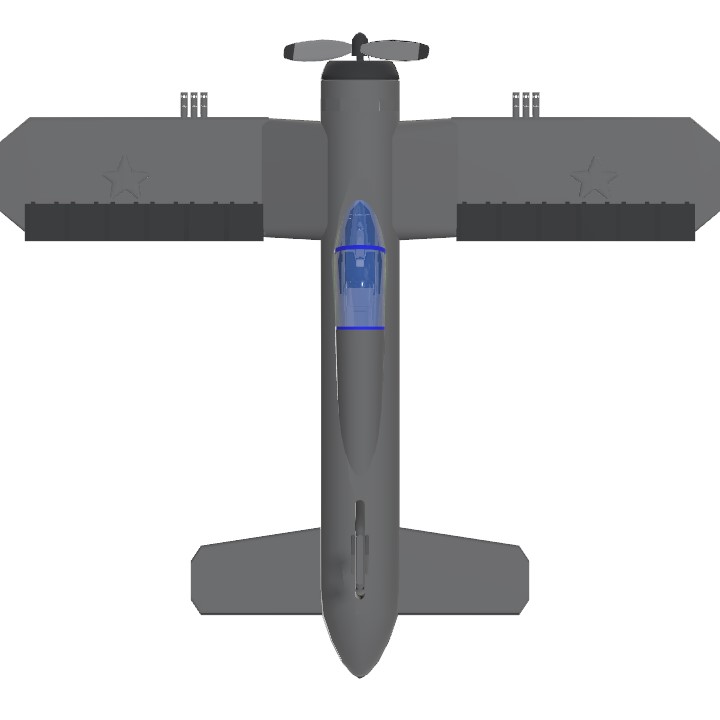
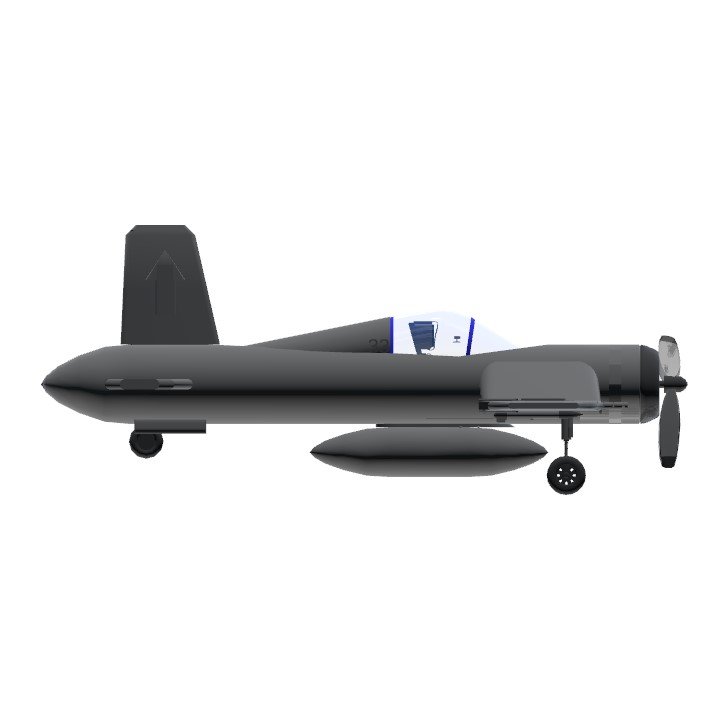
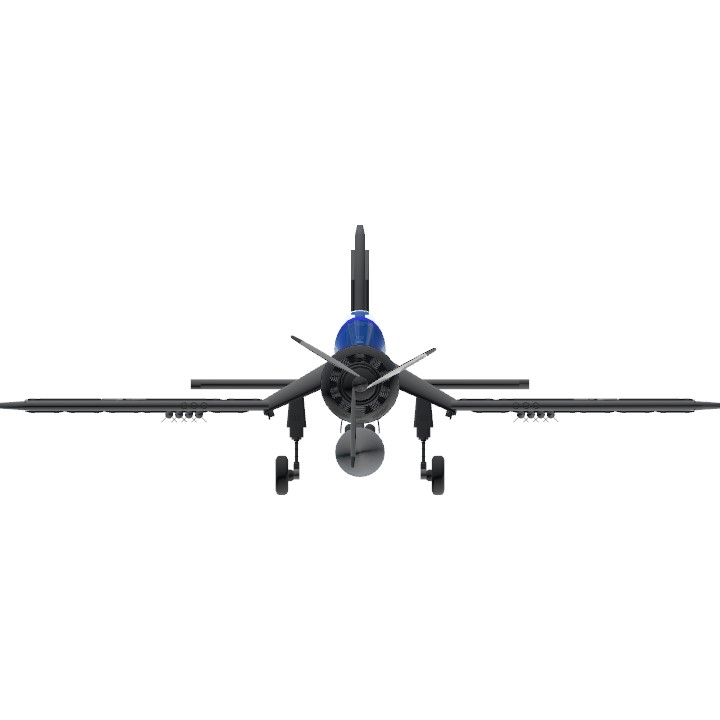
enjoy!!!: )